Fate/Samurai Remnant Review
As I rolled credits on my first run of Omega Force’s Fate/Samurai Remnant, I had an odd thought: “This might be the first real Fate story I’ve played since consuming a fan translation of Fate/Stay Night many years ago.” Thinking back on that initial reaction, flush as it was with the high of completing a new game, it was definitely an irrational, impulsive impression — but it wasn’t an entirely inaccurate one.
To say this is a "real" Fate story implies that the other Fate stories out there don't count, and that's definitely unfair. The multiverse of the Fate franchise contains multitudes of stories, thanks in part to Type-Moon’s laissez-faire attitude to canon. As a result, a dazzling array of stories exists under its banner, all built around the conceptual axis of summoning figures from history and legend as Servants bound to Masters. The result is an array of Fate stories that lie on a tangent from the original Fate/Stay Night concept, drifting into their own mythologies as “spin-offs” in the truest sense of the term.
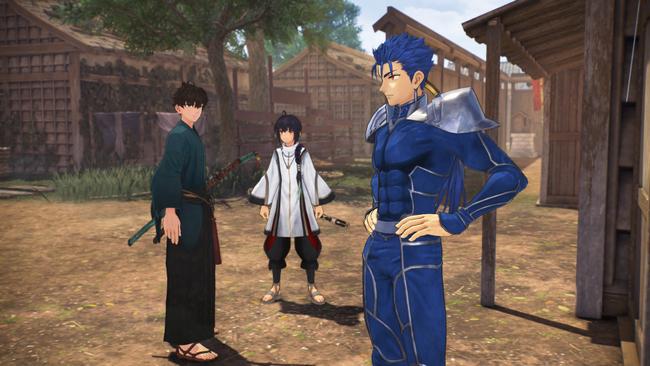
By comparison, Fate/Samurai Remnant is thoroughly grounded in the fundamentals of what would constitute a Fate narrative and, in reaching back to those roots, ends up delivering one of the freshest and most original Fate games in ages. It serves dual roles as a potent fan service delivery vector for veteran fans , and the most approachable game-based way yet to absorb the core concepts the franchise is built around.
As I mentioned in my preview of the game’s first few hours , Fate/Samurai Remnant ostensibly stars Miyamoto Iori, the surviving disciple of legendary swordsman Miyamoto Musashi, as he gets drawn into the mysterious and chaotic “Waxing Moon ritual”, a version of the classic Fate Holy Grail War. This time, it’s taking place in the Japanese capital of Edo, circa 1651.
Iori’s partner is Saber, an androgynous youth dressed in archaic costume that bears a peerless sword and water-based superpowers. They’re also impulsive, rude, arrogant, and a far cry from the dignity and honorable bearing of the classic Saber of Fate/Stay Night . This initial friction between Iori and Saber pays off over the 30 hours it’ll take to finish a first-time run of Samurai Remnant ’s campaign (with a New Game Plus run adding perhaps half that to the count). Their bond grows from that of a pair of bickering, hostile strangers into something akin to true siblings - a connection forged in the fires of combat (and a couple of literal fires).
Fate/Samurai Remnant never passes up an opportunity to let players see Saber and Iori’s bond strengthen. Once paired off at the conclusion of the prologue, Saber and Iori are together for virtually every plot movement and side quest, and even the random battles and strategic “Leyline Conflict” sub-mode. Even in the life-and-death struggle that is the Waxing Moon ritual, the game makes time to let Iori show Saber the sights, sounds, and tastes of seventeenth-century Edo.
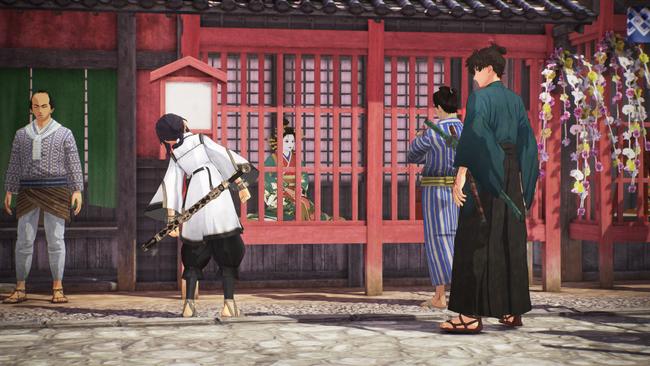
The city of Edo itself is also a big star. The game distinguishes itself from many Fate stories - even the original - by tying its plot and setting intimately to a real place and a real period of history. Saber and Iori set out from their home base in the neighborhood of Asakusa and range all over the metropolis - which by that time was already one of the largest urban centers in the world - to shop, eat, fight, and experience city life amidst the Waxing Moon ritual.
Though individual levels are somewhat small by contemporary standards, every one of them has a distinct visual identity, made livelier by bustling crowds of NPCs (a particular specialty of the developer made famous by Dynasty Warriors ). The many times players revisit these neighborhoods for one quest or another leads to familiarity, establishing a sense of grounding in place and time that’s actually quite rare in a Fate story.
Fate stories, particularly the spin-offs, have tended towards the abstract in their choices of setting. Fate/Grand Order ’s time-traveling plotline takes the broad strokes of historical eras and uses mystical crises to disrupt them so completely they may as well be completely original. Fate/Extra , the next most popular Fate -based game entry, takes place in a far future supercomputer the size of the moon, and prefers shiny polygons and virtual environments to anything resembling reality.
In contrast, playing Fate/Samurai Remnant felt a bit like the “virtual tourism” experience I’d expect from the likes of an Assassin’s Creed title or a classic Yakuza/Like A Dragon installment, thanks to my acclimatization to Edo’s environs and the voluminous lore entries populating the in-game codex.
Put plainly, the game revels in its setting in a way that not even the original game does. This works to enhance the impact of the narrative and characters. Turns out that the notion of summoning heroes from beyond time and space hits that much harder when it’s somewhat grounded in the real world , making these larger-than-life characters stand out all the more.
All this takes place against the backdrop of Fate/Samurai Remnant ’s gripping storyline. Like all good Fate stories, the Waxing Moon ritual - a Holy Grail War in all but name - quickly goes off the rails. While Miyamoto Iori is the classic everyman inadvertently caught up in the madness of the ritual, its other vested participants spare little time bending, twisting, and breaking the rules to steer the competition in their favor. Alliances are formed and rivalries are established.
Thanks to the presence of numerous unaffiliated “Rogue Servants”, the battle royale is repeatedly spiced up by the superpowered anime equivalent of a pro-wrestling run-in. Iori and Saber are together for it all, though the game also allows plenty of time for side quests and other antics involving the Servants and their whims.
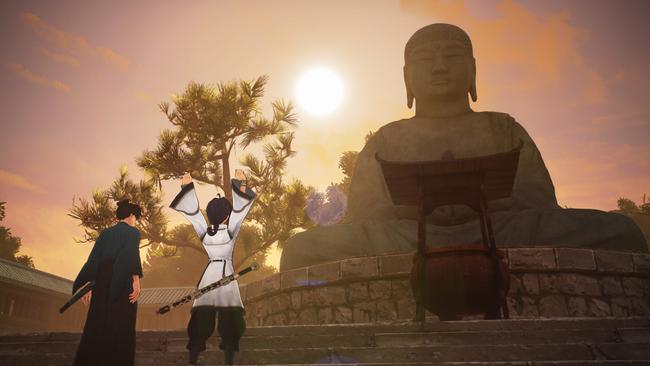
But what about the parts where Iori and Saber are out spilling blood? Frankly speaking, I could take them or leave them. Fate/ Samurai Remnant ’s combat is built on the bones of the venerable Musou series. Pretty much every combat move is a combination of light and heavy attacks, with the move itself determined by the heavy attack’s position in the chain. It’s a simple system that’s easy to pick up and works well for a game like Samurai Remnant , where you’ve got a number of playable characters with their own unique styles. That being said, there’s not much to it, and if you find that rhythm of combat to be too repetitive for your taste, the more detailed changes and tweaks Omega Force has made won’t be enough to change your mind.
For those who’ve made their peace with the style though, the tweaks do lend a worthwhile sense of coordination to the effort. You’ll spend most of your time controlling Iori in combat, and using one of his five available sword styles (all derived from Miyamoto Musashi’s famed Book of Five Rings ) according to the situation. Faced with crowds of disposable baddies? Try the wide, sweeping Water form. Learning the pattern of a Servant’s attacks and need some defensive insurance? The Earth form has a recharging guard that keeps Iori from being interrupted and knocked back by attacks. The three other forms (Fire, Wind, and Void) are more exotic, folding in bespoke mechanics suited to tackling mystic threats like monsters and Servants.
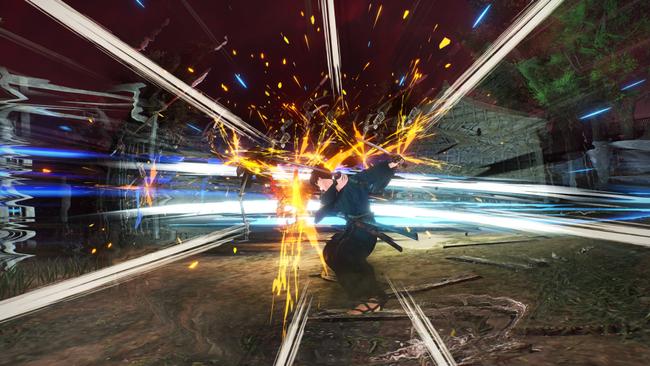
Each style also comes with its own skill tree, and players can spend quite a bit of time buying upgrades that unlock enhancements for each of the styles. Iori can also use magic, flinging out spells and buffing up using gems dropped from defeated enemies, though spells are more of an optional layer on top of melee combat rather than a true core mechanic.
Instead, if anything feels more like a “spell” in Samurai Remnant ’s combat system, it’s the Affinity mechanic. Dealing damage fills an Affinity Gauge that governs Saber and other Servants’ involvement in a fight. These Affinity Techniques vary in cost depending on their power, but they work kind of like an on-call assist move. Saber can bust out attacks ranging from a spray of hyper-accelerated rain droplets to a buff that causes Iori’s sword strokes to send out waves of water to cut apart foes. Fully charged Affinity can also be used to take temporary direct control over a Servant. This often proves essential to shortening a fight, as Servants do great damage to bigger enemy’s “shell gauge”, a shield that prevents Iori’s attacks from doing much damage directly.
The combat works well enough. Across the game’s three endings (one of which is exclusive to a New Game Plus run), almost every Servant gets some time on the field, and each plays in a unique way compared to the others. There are a few stumbles where the simplistic combat and encounter design unnecessarily undermine Omega Force’s attempts to refine their classic Warriors control and combat schema. Most combat encounters consist of a single tough enemy (like a Servant) surrounded by crowds of disposable minions. It’s a simple enough task to switch styles to clear out the minions before confronting the leaders, but when it comes to the actual task of dueling an enemy of equal or greater strength, the combat mechanics fall somewhat short of the goal.

Enemies can deal a large amount of damage to Iori. Meanwhile Saber or other allied Servants aren’t always available to control, thanks to the limits of the Affinity Gauge. Thus, it often falls to Iori to interrupt or counter an enemy’s big moves using careful evasion and precisely timed ripostes. At its best moments, when everything comes together, Iori, Saber, and their allies fight together like a well-coordinated team, swapping in and out to punish enemies for having the temerity to challenge them on the battlefield. When Game Director Ryota Matsushita mentioned in our interview that Fate/Samurai Remnant is a game centered on “the Master’s point of view,” the thing he didn’t mention was that the Master in this case is the kind that can, by the end of things, go toe-to-toe with Servants.
Unfortunately, such moments are rarer than they could be, because Samurai Remnant ’s combat system isn’t really tuned for the kind of precision that can produce them. Ripostes often felt like they happened randomly while I was trying to evade, and I never really got them to trigger reliably or really grasp their timing.
Similarly, the same visual flair that makes annihilating crowds of enemies with flashy sword strikes and Noble Phantasms so appealing will often obscure a major enemy’s attack animations, making it even harder to land the timing than it already is. Instead, I simply got used to always having some Affinity or a heavy Valor strike charged up to interrupt an enemy’s major attacks, and settled for healing my way through some more challenging fights. It could just be a problem with my personal skill level, yet this friction between what the team at Omega Force seemed to want combat to be and what it actually is in Fate/Samurai Remnant left me feeling like the mechanical tuning isn’t all the way there.
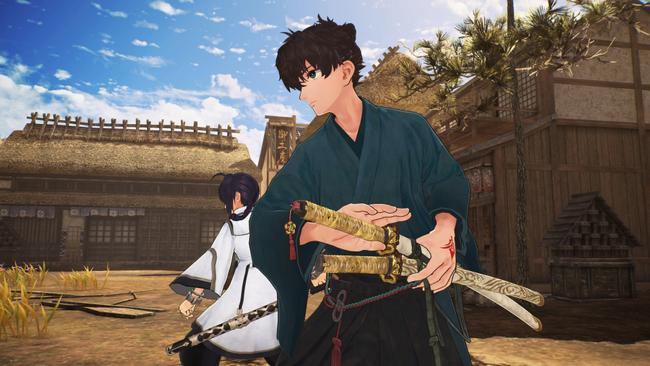
Slightly underwhelming combat aside, it is a pretty small blemish on the face of a work that might be the best Fate game to emerge in a long while. By reframing the core context of a Holy Grail War and establishing it in a new setting and with a new, fresh cast of characters, Fate/Samurai Remnant manages to grasp and elevate the fundamentals of the Fate series in a way that makes it all approachable, while not skimping on fan service for those who’ve stuck with Fate all this time.